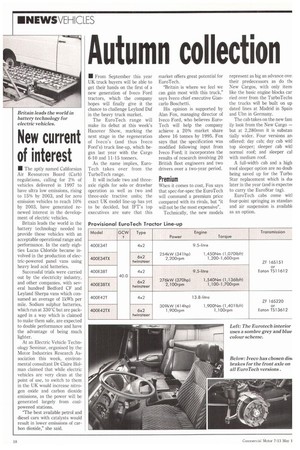New current of interest
Page 20

If you've noticed an error in this article please click here to report it so we can fix it.
• The aptly named Californian Air Resources Board (Carb) regulations, calling for 2% of vehicles delivered in 1997 to have ultra low emissions, rising to 15% by 2003, and for zero emission vehicles to reach 10% by 2003, have generated renewed interest in the development of electric vehicles.
Britain leads the world in the battery technology needed to provide these vehicles with an acceptable operational range and performance. In the early eighties Lucas Chloride became involved in the production of electric-powered panel vans using heavy lead acid batteries.
Successful trials were carried out by the electricity industry, and other companies, with several hundred Bedford CF and Leyland Sherpa vans which consumed an average of lkWh per mile. Sodium sulphur batteries, which run at 330°C but are packaged in a way which is claimed to make them safe, are expected to double performance and have the advantage of being much lighter.
At an Electric Vehicle Technology Seminar, organised by the Motor Industries Research Association this week, environmental consultant Dr Claire Holman claimed that while electric vehicles are very clean at the point of use, to switch to them in the UK would increase nitrogen oxide and carbon dioxide emissions, as the power will be generated largely from coalpowered stations.
"The best available petrol and diesel cars with catalysts would result in lower emissions of carbon dioxide," she said.




















































































































